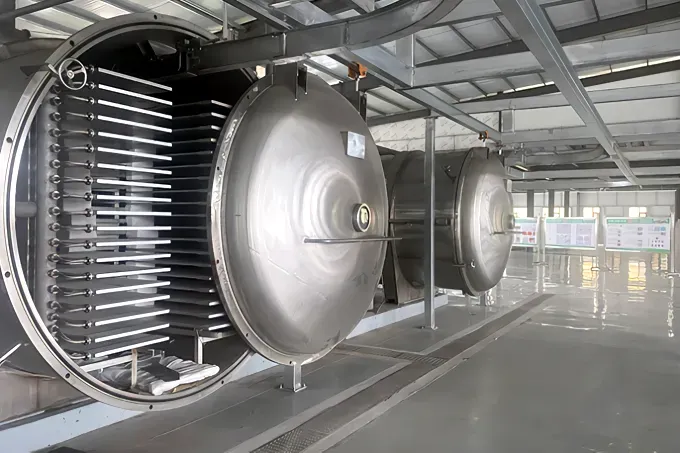Table of Contents
What is a Freeze Dryer? Lyophilization Technology Explained

Freeze drying, or lyophilization technology, is a sophisticated preservation method used across industries to extend product shelf life while retaining essential qualities like flavor, structure, and potency. But what exactly is a freeze dryer, and how does it work? Below, we break down the science, process, and applications of this transformative technology.
Definition & Basic Principle of Freeze Drying
A freeze dryer is a specialized device that removes moisture from materials through a process called sublimation. Unlike traditional drying methods that use heat (which can damage sensitive substances), freeze drying converts ice directly into vapor without passing through a liquid phase. This preserves the material’s structure, nutrients, and functionality.
Key Components of a Freeze Dryer
Vacuum Chamber: Creates a low-pressure environment to enable sublimation.
Condenser: Traps and freezes the vaporized moisture.
Shelves: Hold the product and regulate temperature during freezing and drying phases.
This method is ideal for heat-sensitive materials, from life-saving vaccines to gourmet foods.
How Freeze Dryers Work: A Step-by-Step Breakdown
Freeze drying occurs in three stages, ensuring minimal damage to the product:
Freezing:
The material is rapidly frozen at ultra-low temperatures (-50°C or below). This locks its structure in place.Primary Drying (Sublimation):
A vacuum pump reduces pressure in the chamber, allowing ice crystals to sublimate directly into vapor. The condenser then collects this vapor.Secondary Drying (Desorption):
Remaining bound moisture is removed by slightly raising the temperature, ensuring the product is thoroughly dry.
Freeze Drying vs. Traditional Drying Methods
Heat Drying: Uses high temperatures, risking degradation of proteins, flavors, or vitamins.
Air Drying: Slow and ineffective for liquids or complex structures.
Freeze Drying: Preserves 95-99% of nutrients and original structure, making it superior for sensitive applications.
Major Applications of Freeze Dryers
1. Pharmaceuticals & Biotechnology
Lyophilization technology is critical for stabilizing temperature-sensitive drugs:
Vaccines (e.g., mRNA COVID-19 vaccines require ultra-cold storage without freeze drying).
Antibiotics and injectable medications.
Blood plasma and diagnostic reagents.
By removing moisture, freeze-dried products can be stored at room temperature for years, simplifying global distribution.
2. Food Industry
Freeze drying retains taste, color, and nutritional value better than canning or dehydrating. Common uses include:
Instant coffee and tea.
Astronaut food (NASA relies on freeze-dried meals for space missions).
Snacks like fruits, yogurt bites, and camping meals.
3. Research & Laboratories
Scientists use freeze dryers to preserve:
Biological samples (bacteria, tissues).
Historical artifacts (water-damaged documents).
Chemicals with unstable molecular structures.
Why Freeze Drying Matters
Lyophilization technology solves a universal challenge: preserving perishable materials without compromising their integrity. From extending vaccine accessibility to creating lightweight, nutritious foods, freeze dryers play a pivotal role in modern science and industry.
Whether you’re storing life-saving medicines or brewing instant coffee, understanding the freeze dryer meaning and its capabilities highlights why this innovation remains indispensable.
